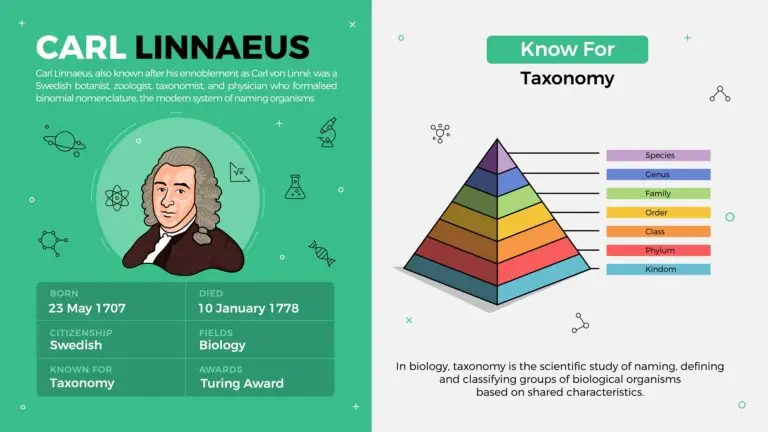Taxonomy

Table of Contents
What is Taxonomy?
Taxonomy is the science and practice of classifying, organizing, and naming living organisms based on shared characteristics and evolutionary relationships. The primary goal of taxonomy is to categorize and name organisms to reflect their natural relationships systematically. This field plays a crucial role in understanding and documenting biodiversity and communication among scientists and the broader public.
Components of Taxonomy
Classification
Classification involves grouping organisms into hierarchical categories based on shared characteristics. From broad to specific, the main taxonomic ranks are domain, kingdom, phylum, class, order, family, genus, and species.
Nomenclature
Nomenclature refers to the system of assigning names to organisms. In biological taxonomy, the scientific name of an organism is typically a binomial, consisting of the genus name followed by the species name (e.g., Homo sapiens).
Identification
Identification involves recognizing and distinguishing between different organisms. Taxonomists use a variety of characteristics, including morphological, anatomical, genetic, and ecological traits, for accurate identification.
Characterization and Description
Taxonomists characterize and describe new species or organisms to provide a comprehensive and detailed understanding of their features. This includes documenting physical traits, behavior, habitat, and other relevant information.
Phylogenetics
Phylogenetics is the study of evolutionary relationships among organisms. Molecular data, such as DNA sequences, are often used to reconstruct phylogenetic trees, which depict the evolutionary history and relatedness of different species.
Hierarchical Levels of Taxonomy
Domain: The highest taxonomic rank, representing the broadest category of life. The three domains are Bacteria, Archaea, and Eukarya.
Kingdom: A major taxonomic rank below the domain, grouping organisms based on fundamental similarities. Examples include Animalia, Plantae, and Fungi.
Phylum: A taxonomic unit below the kingdom, grouping organisms with shared body plans and structural characteristics.
Class: A taxonomic rank below the phylum, grouping organisms with similar characteristics and features.
Order: A taxonomic rank below the class, representing a group of related families.
Family: A taxonomic rank below the order, grouping related genera.
Genus: A taxonomic rank below the family, grouping species with common characteristics.
Species: The lowest and most specific taxonomic rank, representing a group of individuals that can interbreed and produce fertile offspring.
Related Links
Classification
Genus
Kingdom
Trophic Level